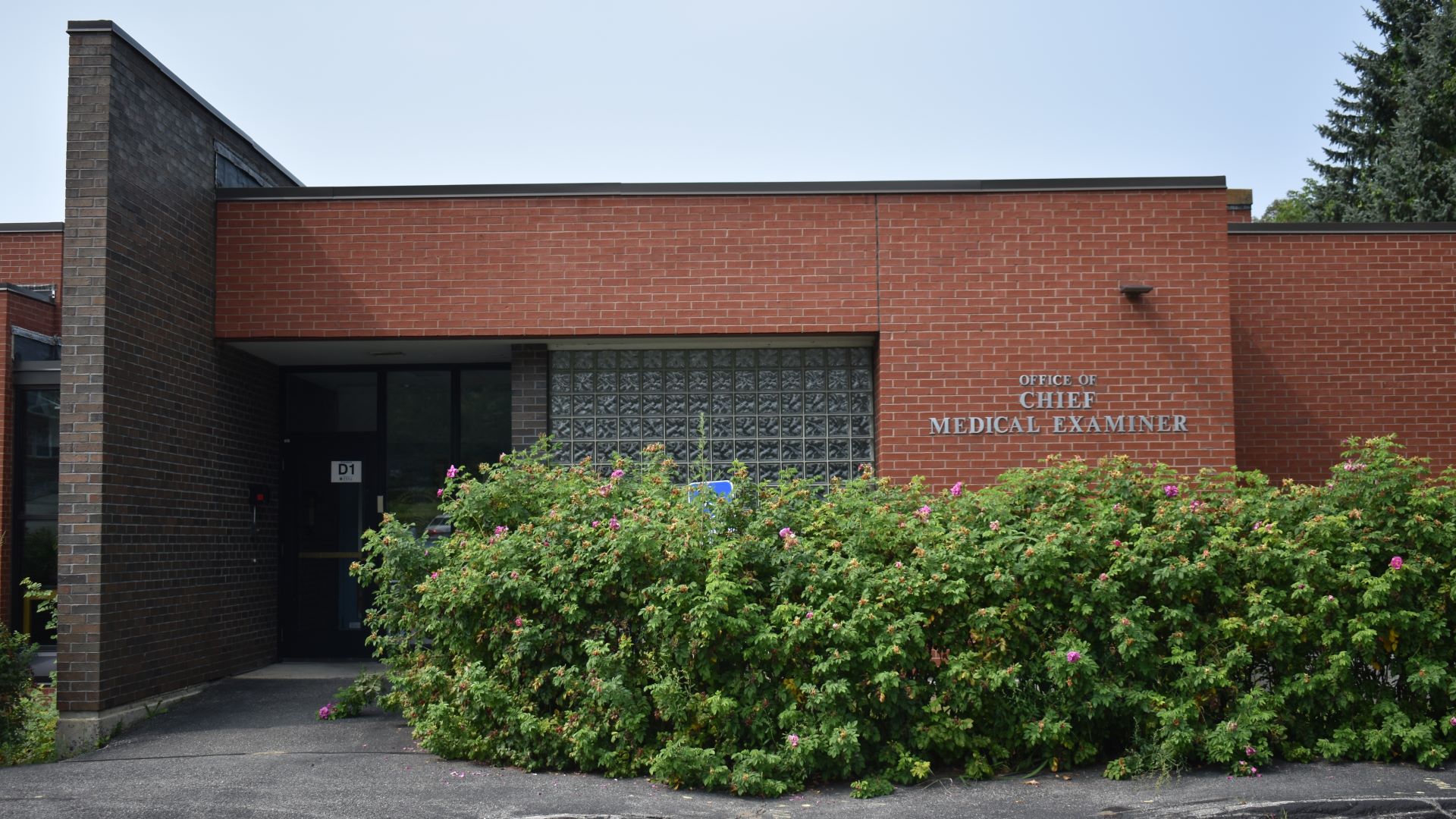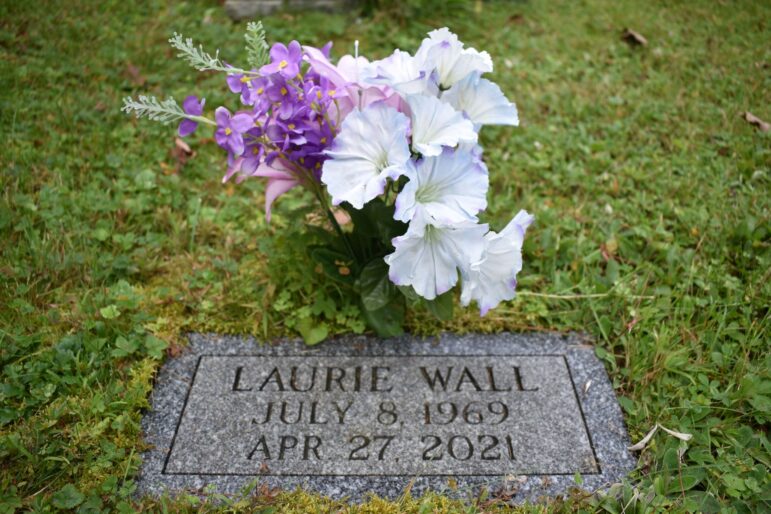By Samantha Hogan
A state senator says the unexplained deaths are of “grave concern” and calls for greater accountability.
Eight incapacitated people in the state’s care died during the past three years and authorities don’t know exactly how.
The adults, all under public guardianship, died of what medical examiners described as “undetermined” circumstances, while noting that over-medication was the cause of several of those deaths. Among them is a woman whose death was deemed a “homicide” by medical examiners.
The attorney general’s office closed the homicide case without prosecution due to insufficient evidence, spokeswoman Danna Hayes said in late August.
Hayes said that “due to a lack of evidence of criminal conduct,” several other cases “are not the subject of criminal investigations” by the office’s criminal division or Healthcare Crimes Unit, which is a specialized team that investigates abuse and neglect.
Meanwhile, Maine State Police confirmed they have an open case for another of the eight, the death of Laurie Wall, 51, a non-verbal woman who used a wheelchair and had a developmental disability. Medical examiners said the circumstances of her death are “undetermined.”
A state legislator who chairs the Health and Human Services Committee said the deaths show the need for better oversight of the state’s public guardians, who are appointed and overseen by 16 part-time, elected probate judges.
“It causes grave concern,” said state Sen. Joe Baldacci (D-Bangor). “And I do think that the Legislature needs to be brought in to correct what problems the (Attorney General’s) Healthcare Crimes Unit feels were evident in these situations and to make efforts to prevent them in the future.”In Maine, at least a half-dozen agencies could investigate such deaths. Officials with the attorney general’s office refused to say how many of the eight cases were referred to the Healthcare Crimes Unit or its criminal division.
The attorney general’s office said it inadvertently disclosed the eight cases in response to a public records request by The Maine Monitor earlier this summer.
The unexplained deaths are the latest findings of an ongoing investigation into Maine’s part-time probate courts by the Monitor.
In June, the news outlet reported that the probate courts had no uniform way to keep track of vulnerable adults under public guardianship, and probate judges relied on once-a-year reports by guardians to oversee their care. The probate courts employ no independent investigators to verify the reports, the Monitor reported.
State medical examiners identified the eight cases while stepping up their review of deaths of adults with public guardians between 2018 and 2023. The Department of Health and Human Services, which employs the guardians, was reporting an increasing number of deaths at that time. Medical examiners deemed most of the more than 200 deaths in that period to be natural or accidental.
Public guardianship is the last resort for adults who can no longer safely make their own decisions. Probate judges appoint public guardians to make medical, housing and social decisions for incapacitated adults when no relatives are willing or able to help.
The Monitor reviewed 300 pages of reports submitted to the probate courts by public guardians, doctors, family members and court-appointed independent observers known as “visitors” that justified the state’s position that the Department of Health and Human Services needed to take over management of the eight adults’ lives.
Some lived a few months after being appointed a public guardian; others had their care managed by the department for decades.
The eight deaths, all in the past three years, include:
• Janice Sirois, 61, died in Fort Kent on Aug. 8, 2022, in what medical examiners say was a homicide. The attorney general’s office decided not to prosecute the case.
• Laurie Wall, 51, was in state care since she was 2½ years old and was diagnosed with cerebral palsy. She died of “acute intoxication” of multiple prescription medications at a foster home in Cornville on April 27, 2021, medical examiner records show.
• Donald Burpee, an 85-year-old from Durham who had a mental disability, died of “acute oxycodone over-medication for (the) treatment of pain,” on Sept. 20, 2021, medical examiner records show. He had prostate cancer that had attached to multiple organs.
• Dorothy Littlefield, 72, died in Portland from heart disease “in context of excessive medication for the treatment of Alzheimer’s disease.” Shortly before she died on May 23, 2022, Littlefield was receiving hospice care and declining both mentally and physically, her public guardian reported to the probate court.
• Eugene Strout, 77, died of “septic complications of prolonged immobilization” at a residential care facility in Hancock on July 28, 2020. Strout had Parkinson’s disease — a brain disease that causes uncontrollable movements, and trouble with balance and coordination — and “severe cognitive impairment” from Lewy Body Dementia.
• Jonas Miller, 80, died in a residential care facility in Canton of heart disease in October 2022. A medical examiner noted there was also “over-administration of morphine for pain control,” as well as a serious complication of diabetes, end-stage kidney disease and end-stage liver disease.
• Koren Velez, 68, died of a bleed around her brain and “blunt force trauma” on July 15, 2020, at the Maine Veterans’ Home in Scarborough. She was a Navy veteran and a victim of domestic violence, court records show.
• Richard Spencer, 87, was given “excessive medications for the treatment of multiple comorbidities,” according to a medical examiner. The cause of his death in Bangor on Jan. 14, 2023, was heart disease. The manner of Spencer’s death was “undetermined.”
U.S. medical examiners describe how deaths occur by using five broad categories: natural, accident, homicide, suicide and undetermined.
Maine’s Office of Chief Medical Examiner conducts physical examinations of bodies, toxicology or other tests to determine the cause and way a person died, office administrator Lindsey Chasteen wrote in response to questions from The Maine Monitor. The office also reviews information from law enforcement and health care facilities.
“When ‘undetermined’ is used, it means that all of the testing or results are completed and there still is not enough information for us to make a determination,” Chasteen wrote.

The National Association of Medical Examiners, a professional organization in which Maine participates, recommends that a death be labeled “undetermined” when there is “less than 50% certainty” about how the individual died.
Only Maine’s chief and deputy chief medical examiners can classify a death as “undetermined,” and it’s rarely done. Between 1% and 2% of all deaths investigated in recent years were found to be undetermined, reports by the office show.
Usually, there is enough information about the circumstances of a death to make a determination other than “undetermined,” Chasteen wrote. An “undetermined” death is not automatically suspicious, she said.
The Department of Health and Human Services is supposed to tell lawmakers on the Health and Human Services Committee each time it reports a death to the medical examiner’s office, but that is not happening, said Baldacci, the committee chairman. He has instructed the department to review its procedures.
“The thing that needs to happen is we really need to have more oversight; we need to have better training of people that engage in this work for the state, and we need to have better reporting,” Baldacci said. “These are vulnerable people and the families are in difficult situations, often. And they need to have the state, at a minimum, be a competent advocate for them.”
Homicide in Aroostook County
Sirois’ death in 2022 was designated as a “homicide” by medical examiners. No one has been charged with killing her.
“The Sirois matter has been closed without prosecution due to insufficient evidence that a crime has occurred,” the attorney general’s spokeswoman Hayes wrote in response to questions from the Monitor.
According to her obituary, Sirois died at a Fort Kent health care facility. She was under public guardianship for 12 years.
Medical examiners have a different definition of “homicide” from prosecutors. “Homicide is a death that occurs at the hands of another person or as a result of an illegal act,” according to the Maine medical examiner’s office. The label does not mean there was criminal intent to kill the person.
The Healthcare Crimes Unit in the attorney general’s office is a federally funded team that investigates Medicaid fraud as well as abuse and neglect in MaineCare facilities.
Assistant Attorney General Bill Savage, who leads the Healthcare Crimes Unit, said prosecutors need to prove beyond a reasonable doubt that someone intentionally committed murder or manslaughter.“Not every homicide is a manslaughter or a murder,” Savage said.
Savage and Hayes would not answer the Monitor’s questions specific to Sirois’ death or the investigation, because they said her name and the details of her death should not have been made public.
Sirois died of the “combined toxic effects of ethanol, hydromorphone and paroxetine,” medical examiner records show. In layman’s terms: alcohol, an opioid and an oral medication that can be used to treat Post-Traumatic Stress Disorder, or PTSD.
Sirois struggled to manage her PTSD and several chronic conditions later in life, her doctor reported to the probate court in June 2010 while the state was petitioning to be made her public guardian.
In Madawaska, a small community near the northern U.S.-Canadian border, Sirois lived close to a sister who helped Sirois manage her medications. More than once, Sirois did not take her medicine and ended up in the emergency room, probate records show.
“Because of Ms. Sirois’s fragile hold on her mental and physical health, general guardianship powers will be required in order to better meet Ms. Sirois’ immediate and ongoing needs,” the state wrote at the time.
The plan was to keep Sirois in an apartment and have a case manager periodically visit to monitor her care, probate records show. Within a year, Sirois moved to an assisted living facility in Presque Isle, according to her public guardian’s report to the Aroostook County Probate Court in 2011. Sirois threatened to move out against her guardian’s advice.
Sirois moved between multiple facilities, and her public guardian told the court through reports and updates that Sirois didn’t have the skills to live on her own.
The details about the end of Sirois’ life are hidden from public view. Darleen Guy, register of the Aroostook County Probate Court, said the Monitor would need to petition to join the case to view reports from Sirois’ public guardian that describe her whereabouts and care.
However, the records should be public because state lawmakers passed an emergency law this year to keep adult guardianship records public until at least April 2025.
The medical examiner’s office also denied the Monitor’s request for records detailing its findings in Sirois’ and the seven other deaths. Chasteen denied access, arguing that the details should not be public because the eight deaths “are still under investigation.”
The Monitor made multiple attempts by mail and social media to contact Sirois’ friends and family but did not receive responses.
State examines more deaths than before
The Office of Chief Medical Examiner rarely reviewed public guardianship deaths prior to 2021.
The office reviewed the deaths of four people who died while under public guardianship in 2018 and six deaths in 2019, according to data provided to the Monitor by the office. In 2020, the office examined 15 public guardianship deaths.
The medical examiner’s examinations of public guardianship deaths jumped to 66 death reviews in 2021 and 75 deaths reviews in 2022, after the office changed its policy in 2021. The change called for an external exam of anyone who dies while the state is their guardian or conservator, and resulted in a five-fold increase in reviews compared to prior years.
“The number of deaths reported by the Department of Health and Human Services increased, and the (Office of Chief Medical Examiner) determined that examinations or autopsies of public wards might determine if there is a need to protect any other persons within this vulnerable population,” Chasteen wrote in response to questions from the Monitor.
When a death is labeled undetermined, it is “not necessarily” suspicious, Chasteen wrote.
“It simply means that (the Office of Chief Medical Examiner) could not determine the manner of death based on the information available about the circumstances of that death,” Chasteen wrote.
Incapacitated woman potentially over-administered meds
Police are looking deeper into one of the “undetermined” deaths flagged by the medical examiner’s office.
The death of Laurie Wall, the woman with cerebral palsy and a mental disability who died from “acute intoxication” of the combined effects of three medications, has been an open case for more than two years.
The Major Crimes Unit of the State Police investigated her death, said spokeswoman Shannon Moss.

Wall had been under public guardianship for 34 years when she died in 2021.
Wall had a “profound” mental disability and required hands-on care for dressing, bathing, toileting, eating and drinking. She was described around age 18 as being “non-verbal and has tremendous difficulty making even the simplest needs known.” Her condition did not improve.
Wall was born in Rockland and was placed in state care by her parents around age 2. Her needs were too extensive for the family to financially or mentally handle, said her sister, Stormie Hendrickson.
Hendrickson was born a year before her younger sister. The state periodically brought Wall to visit her family until about age 13, and then several decades passed before the sisters saw each other again, said Hendrickson, who now lives in Waldoboro.
Out of the blue, around 2009, a case worker and a foster parent contacted Hendrickson to ask if she wanted to see Wall.
Wall lived in three adult foster homes — in Pittsfield, Skowhegan and finally, Cornville. Despite the high level of care Wall required, she went on camping trips, shopping and to football games with her foster families, her guardians reported to the Somerset County Probate Court.
Her last foster parents appeared to love and take good care of Wall, Hendrickson said.
“Her complexion looked great, she was always clean and well dressed, they were very attentive to her, and they acted like … she knew everything that was going on,” Hendrickson said. “They treated her like she understood everything you said, and maybe she did. They would know her more than I did.”
The foster parents declined to speak with a Monitor reporter.
Wall died “unexpectedly but peacefully at home,” according to her obituary. The state medical examiners later determined that “the combined effects of levetiracetam, fluoxetine and lacosamide” — three prescription medications — had caused her death.
Hendrickson said she was not contacted by state police about her sister’s death. She was unaware that an investigation had been ongoing in the more than two years since Wall died.
“I was just told she passed away in her sleep,” Hendrickson said.

Public guardians notify the medical examiner’s office when an adult under public guardianship dies. If abuse, neglect or exploitation is suspected, Adult Protective Services is contacted, said Jackie Farwell, a Department of Health and Human Services spokeswoman.
“The department is committed to the well-being of individuals subject to public guardianship and takes appropriate action to ensure caretakers are held to legal and regulatory standards,” Farwell wrote.
The department declined to answer questions about Wall or the seven other individuals. The department would not say if it had substantiated reports of abuse, neglect or exploitation of any person connected to the seven undetermined deaths or the homicide because it said that information is confidential.
The attorney general’s office also declined to say how many of the seven “undetermined” public guardianship deaths were referred to and investigated by the Healthcare Crimes Unit or criminal division.
Savage, the director of the unit, said it gets many referrals but that not every tip, allegation or death is a crime. And even when a crime is clear, prosecutors may lack evidence that proves who did the crime or the person’s state of mind when the crime was committed.
There are few in society more vulnerable than a non-verbal person, said Richard Estabrook.
Estabrook is Maine’s former Chief Advocate. His job included death investigations, and investigations of possible abuse, neglect and exploitation of adults with developmental disabilities living in the community or at the state’s institution for the disabled, Pineland, before it closed in 1996. His position and the entire Office of Advocacy was eliminated by then-Gov. Paul LePage in 2012.“You want the public to be able to trust that your system of care is reasonably assessing risks, and reasonably taking care of people and not neglecting them,” Estabrook said.
How the state will put the eight deaths to rest is unclear. State law requires the Department of Health and Human Services to share information about deaths that are reported to the medical examiner’s office with elected representatives. State lawmakers recently found out the law is not being followed.
Baldacci, the state senator, said he understands state prosecutors want to keep information in ongoing investigations confidential until the cases are resolved or go to court. But there’s a limit.
The probate courts need a more comprehensive system of oversight for public guardianships to prevent these kinds of deaths from happening, Baldacci said.
“The current system is not adequate in terms of oversight,” Baldacci said.
State regulators may need to assist with oversight because 16 independent probate courts cannot be expected to have a uniform system when each of the courts “have completely different budgets,” Baldacci said. He hoped the probate judges would be willing to engage with lawmakers about doing training and setting procedures that could be implemented statewide.
“In the next legislative session, we may need to consider additional
legislation starting in January about addressing these issues and
improving the system of oversight,” said Baldacci.
Full Article & Source:
Eight deaths raise questions about oversight of Maine’s public guardianships





No comments:
Post a Comment